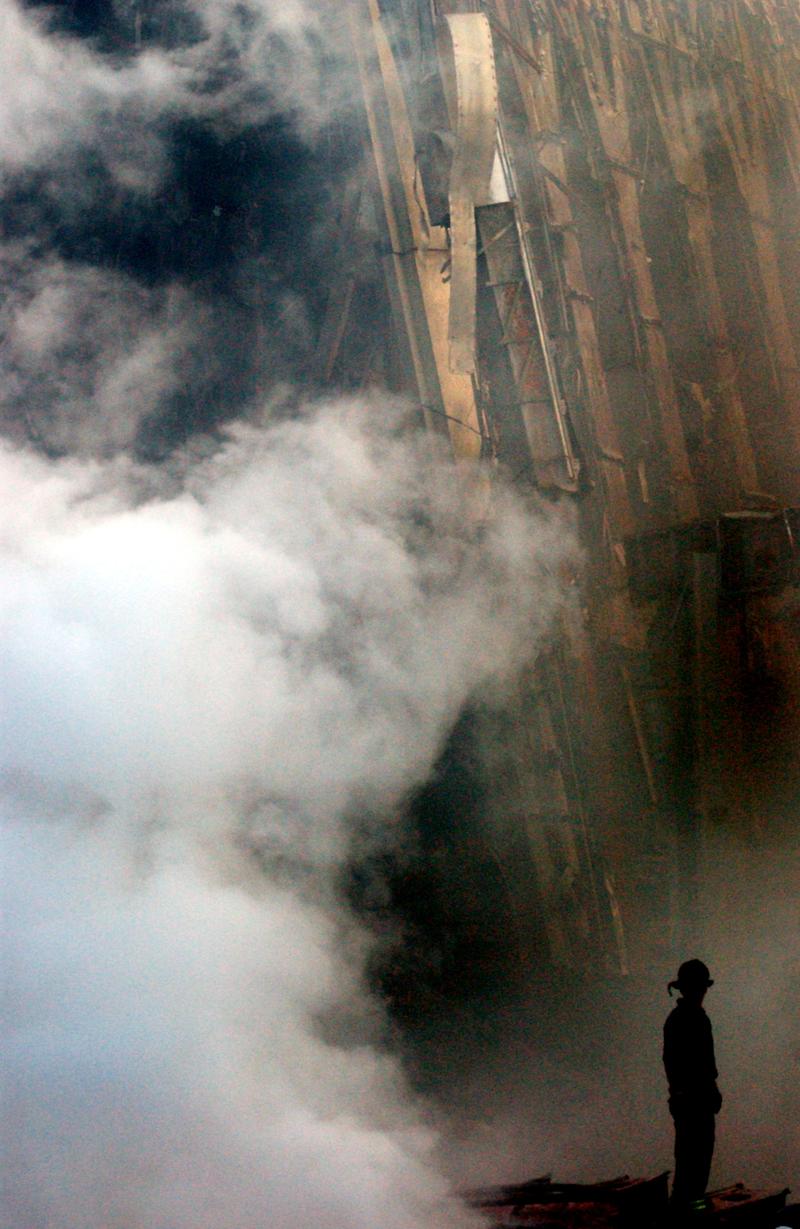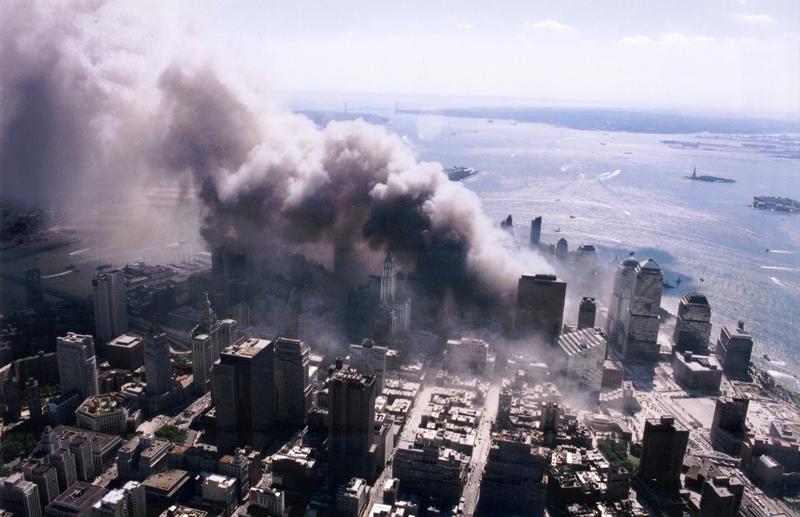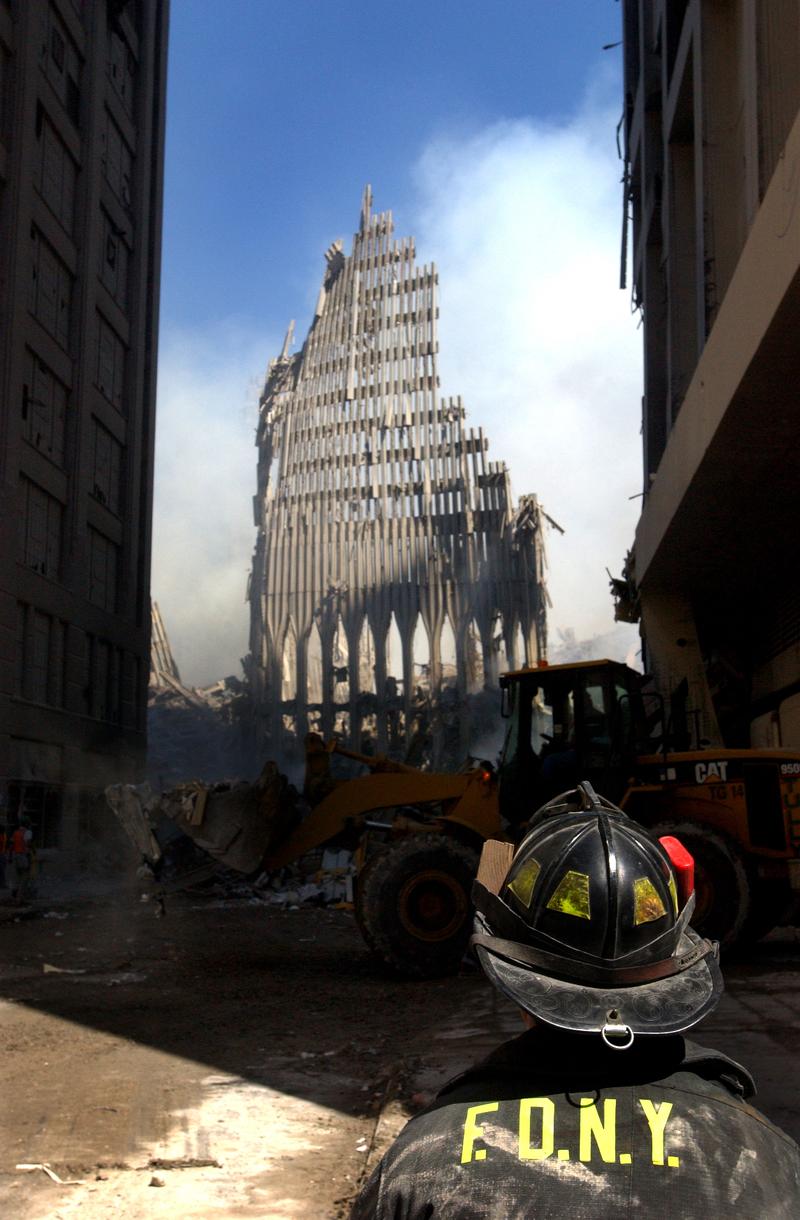The tremendous impact of September 11th, 2001 can’t be overstated. It was such an unbelievable cataclysm that it defies hyperbole. The trauma of the attacks on the World Trade Center and the Pentagon rippled outward, setting off wars and shifts in foreign policy that still reverberate today.
But before 9/11 was a political cudgel, it was an event. A moment in time. Large enough to collectively terrify a nation of 285 million.
I was there that day. Not at the Towers, but in New York City — teaching in Queens and living in Brooklyn. It was my third day as a high school English teacher. I watched the second tower fall from the gym roof during my prep period, then went downstairs to explain to my third-period students what had happened. In seventh-period, my final class of the day, fighter jets screamed overhead. Not familiar enough with New York to realize that the jets were protecting nearby LaGuardia airport, I feared another attack, yelled “what is that?!”, and ordered the kids to get down.
My voice cracked when I yelled and I’ve always felt bad for letting them see my fear. They were sophomores and needed me to keep it together. I never quite got ahold of that class again, not for the whole year.
The next day, I remember that MTV pulled all of their videos off the air except “One Love” by Bob Marley, “Superman” by Five for Fighting, and a handful of similar tracks. I remember my housemates and me alternating between the news and those five or six videos as they cycled through. It was hot and I spent the day out of my bedroom, wanting to be near people — only to return and find that the wind had shifted and my boxes and clothes, still half unpacked, were blanketed in ash. As I tried to tidy up, I listened to the radio. A request for ice had gone out to cool the drinks of recovery workers, and now that request was being rescinded. So many people with ice were racing toward ground zero that it had caused a massive traffic jam and actual emergency responders couldn’t get through (no subways were running and lower Manhattan streets were closed).
The moment struck me. It was a real-life example of so many people being desperate to help in some way — any way. It reflected a spirit that The Onion captured perfectly a few weeks later with an article titled, “Not Knowing What Else To Do, Woman Bakes American-Flag Cake.”
* * *
My memories of September 11th aren’t profound or even particularly unique. But I return to them often, replaying the sounds and smells and fear and desperation that crashed upon so many people like waves — unrelenting — that day and in the weeks and months to come. And while I’m interested in understanding how 9/11 shaped the nation (and the globe) over the past 20 years, I don’t like to lose sight of the horrors of that one day. The term “Never Forget” seems to have taken on a certain political meaning, but it’s also a good reminder — to remember both the lives lost and the heroic efforts made to save lives on that day.
Perhaps that’s why NatGeo’s 9/11: One Day In America hit me so hard. The docuseries, which is streaming on Hulu and re-airing on NatGeo this weekend, follows firefighters, police officers, military, and civilians through the events of September 11th. The stories they share are incredibly vivid, deeply compelling, and tremendously moving. Some moments leave you heartbroken; others leave you hopeful. By keeping his focus just on the actual day, Director Daniel Bogado paints a nuanced portrait sure to resonate with people who lived through the attacks, watched on TV, or those who are just now coming to understand how that single moment in time has affected all of our lives.
With today being the 20th anniversary of the September 11th attacks, I spoke to Bodgado and South Tower survivor, Kathy Comerford, about their experience with the project and the importance of balancing the agony of that day with stories of inspiration and connectedness. Read our interview below.
Just to give you some personal context for the interview, September 11th was my seventh day living in New York and my third day of teaching. I was only 21, teaching 18-year-olds — so I was out of my depth that day on a million different levels and put in a position to explain that tragedy to them, with the school locked down. All of that said, I want to thank you for making this incredible piece of work that really zeros in on a day that changed America….
I guess the biggest question I want to get at, for both of you, is: how did this project both reawaken and hopefully continue the healing process of the trauma of that day?
Kathy Comerford: I have always been very open and vocal about me and the World Trade Center and my experience. But this project is very personal to me and very important because it’s been 20 years since 9/11. The memory has faded for a lot of people. There’s a whole generation that wasn’t even born on 9/11. So we really have no context. And this documentary — the way that Daniel and the team did it — it also allowed the viewer to step into our shoes on that day. Because there’s no background noise, there’s not a lot of fanfare and music. And it’s truly us talking to the audience about what happened.
Being able to tell that story and carry the message of that day and share not only the horror and the terror, but also the goodness and the humanity of that day is really important to me. To be able to have that as a legacy for those who started to forget, but also those who had no idea.
I think if you were in New York which, as I mentioned, I was at that time, it’s one of the defining moments of your life. And certainly, people who lost close family members it’s even more traumatic. It was a confusing time, too. There was a lot of beautiful, as you say, humanity, and then there was also a lot of rage and sometimes that rage got misplaced. How did you all wrestle with that? And Kathy, how did you experience that in the moment as you tried to recover in the months that followed the attacks?
Kathy Comerford: It’s almost like going through the stages of sympathy, of loss. So I was very angry at first and I was angry because of what they did to the country, but to take it down even small as to what they did to my family, to my children. My children were very young. They were first grade, fifth grade, and first day of high school. My son played lacrosse and freezing on a lacrosse field because we were by Kennedy Airport and the planes were really low. And he dropped to the ground because he thought the plane was going to crash. Or them not wanting me to walk outside because they thought that the terrorists were looking for me — it was really hard to deal with as an adult and then really hard to deal with, to reassure my children and to make sure they were okay.
Because that day I knew where I was every step of the day. But my family didn’t. They didn’t know I was alive till three o’clock in the afternoon. So you have all that anger and rage.
You were in the South Tower, working for Morgan Stanley, on the 70th floor — is that right?
Kathy Comerford: The impact knocked me out of my shoes, so I went to look for them and found them, to start down the stairs. It was like a switch went. And it was like, “nothing’s going to keep me from going home.” I had to stay calm and collected because I was the only one who could take care of me at that point and to get myself motivated, to get into the stairwell, to get down those stairs, and to be part of this group of people that were reaching for each other and helping each other.
As we get further away from the day, the horror and the terror and the fear has sort of subsided a little bit, and then it was the gratitude that I was someone who was spared that day. And then the feeling of, “was I saved for a reason? If so, what is the reason? Is it something greater than I know now? Is it to be a mother to my children? Is it something I can do in my community?”
I always believe that there’s a reason why, on that day, I was one of the fortunate ones to be able to come home.

I remember there was a boy in my class whose mom was a window cleaner and had woken him up that morning to tell him she was cleaning one of the towers. And she got transferred at 7:00 AM and he didn’t know. And I remember sitting with him and the trauma and the fear of thinking that you’ve lost a parent — I’m sure, was cataclysmic for your family. And it’s probably still something on some level that they reel from and has clearly shaped your life. So thank you for sharing that.
Daniel, as a director, clearly this is a heavy responsibility to manage and tell these stories and to look at it from both the micro and macro point of view. What was your philosophy as you tried to manage all the complexities that go into such a massive project?
Daniel Bogado: Once you begin work on a documentary it’s a journey. You can’t just say two years in advance, “this is exactly what will happen.” The other end of the project — you need to allow the possibility of extraordinary things to happen in front of the camera and extraordinary things to happen in the edit, organically, as we find the correct way of telling these stories. But the most important guides for us were our contributors. Very early on, we realized the canvas of the whole series would allow us an opportunity to do something that a documentary that’s one hour long and focuses on one issue, as good as many documentaries have been, couldn’t do. We wanted it to be a landmark and be comprehensive, and you could bring all these stories together in one place, and craft them together to be part of a narrative.
Early on, we realized that the archives that the team had been collecting was extraordinary. It was very, very watchable. They didn’t need to do visualizations or reconstructions or actors or anything like that. Just use the archives. And then, speaking to the contributors, just on the phone and reading oral testimonies, we realized that there was just so much power and eloquence and dignity, just them with their own words. So we just really wanted those two elements to be the pillars of it. And we just need to get out of the way. We just need to be invisible and just create a structure where you can place those things and make them work together seamlessly. That was our goal.
It’s interesting, because it was called One Day in America, and that was the intention for it to be focused on just that day. But at the same time, it’s 20 years later, right? This documentary series is different from one that had been done a year later or five years. Twenty years is a long period of time. The responses are always personal, how somebody deals with something so traumatic, so horrific, so earth-shattering. Everybody deals with it in a different way. It had a profound impact on everybody. But I would say that most of the contributors we spoke to had found… You talk about the stages of grief. They had found a way, for instance, for people who lost loved ones, to be able to speak about them, and think, instead of thinking, just of the final horrible moments, to think about the beautiful moments of their lives and the good people they were, and the good they brought into this world. They were able to smile when they thought about them.
Right — the gift of some psychic distance allows people to have found some sense of peace with what happened. They are angry, obviously, but can still reflect on the beauty of those they lost.
Daniel Bogado: That is kind of the sentiment and the overall sentiment, the overall intention of the series is that, “Yes, we do have these horrific images and these horrific actions that happened that day and not shy away from that. We need to show the reality. We need the next generation to understand the scale of the horror. But it can’t just be that because if you follow those stories, those people that are fleeing and you zoom in to their stories, you realize that’s just half the story. The other half is about the humanity, courage, and kindness.” All these stories that we have, they’re not exceptions. They were representative of stories that we found, hundreds and hundred stories, and that was overwhelmingly the tenor. So my goal, my hope would be that people watch the series and they gain both things.
The horror and the humanity woven together?
Daniel Bogado: A true understanding, a true grasp, why it was so horrific. The scale of the cruelty of what was done. But also the humanity — really shown in a way that’s inspiring. So when people, maybe next time they see those images and they think of the horror, they also think that there was, the way people behaved that day. There’s a lot that’s just incredibly inspiring. So that was the goal, I suppose.

Kathy, I’m sure that in some ways you remember every piece of the day, and maybe in some ways you feel completely dislocated from the day. I mean, that’s what trauma does in our brain. What was it like to dive back into this, to reveal this for the cameras, about what you saw that day. I know that you saw a tremendous amount of agony and I’m deeply, deeply sorry for that. But also what did you see that day that also gave you some hope in humanity… I just want to open the door for you to speak to that if you would.
Kathy Comerford: Everybody, in the beginning, was panicky. Things were exploding. The building was bending in half. The floor was buckling. And then everything straightened up. And at that point, everybody just started to do what they needed to do. They got into groups and we went into the stairwell and as we were going down our stairwell, there was a gentleman sitting there who had two prosthetic legs. And he said, “I can’t walk anymore because my legs are burning” — from the friction of trying to get down all these stairs. We were on the 44th floor at that point. And these two men did not know him. They said, “Oh, no, you’re not.” And they each got under his arms and they carried him all the way down the stairs. And that was just one act. I mean, there was a woman who was having an asthma attack and for some reason I had my son’s inhaler in my pocketbook and I just took it out and I gave it to her. And I said, “Let’s go. Take some hits and let’s keep moving.”
It really got poignant when we got to between the 22nd and the 20th floor. And all of a sudden the integrity of the building started to go and the stairwell just twisted. And you could see cracks in the wall and, probably between 22 and 20, and we were like, “Well, we got to really pick this up.” So we started to move so much faster, but what was happening is the people below us would yell what floor they were on.
We would say, “We’re on 19” and we’d yell up to the group behind us just to give everybody encouragement that we are still seeing it’s clear and everybody’s still moving down and “Hurry up. We’re on 18, we’re on 16, try to catch us.” And so everybody was just in the stairwells, just rallying together. And it wasn’t just me going down the stairs by myself. It was almost like a community. Everybody just kept reassuring everybody else. And New Yorkers get the bum rap that we’re always rushing and we’re shortsighted or anything else. This was the best of New Yorkers. Everybody just was trying to help, as big or as little as they could, just to get people out of that building.
All six episodes of National Geographic’s 9/11: One Day in America are available to stream on Hulu, and will re-air on Nat Geo on Sept. 10 and 11th.


